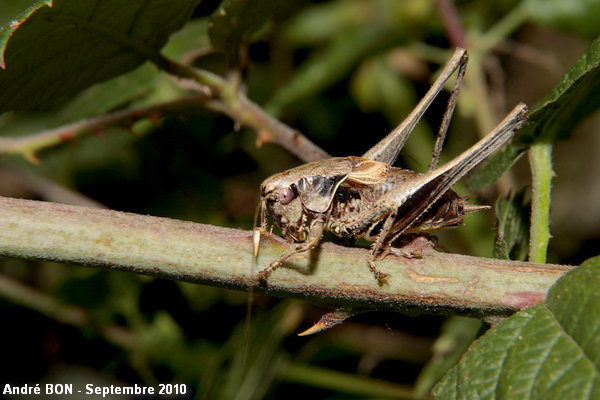




| Dark Bush-cricket (Pholidoptera griseoaptera (De Geer, 1773)) |





|
|
Scientific name: Pholidoptera griseoaptera (De Geer, 1773) Common name: Dark Bush-cricket French name: Decticelle cendrée Order: Orthoptera Family: Tettigoniidae Wingspan : 15 to 18 mm for females, 13 to 15 mm for males. Biotope: Woodland edges, bushy places, hedgerows, blackberry-bushes, parks and gardens. Geographic area: Europe Observation period : You can see adults from July to October. |
Dark Bush-crickets have very short wings. The elytra are very short too. The ground colour varies from pale brown to almost black. Females are usually paler than males. The upper side of the head and of the pronotum are always brown. The underside of the abdomen is bright yellow or greenish yellow. The lateral edges of the male's pronotum are black and bordered by a thin white margin. Males have straight appendages (cerci). Females have 10mm long curved ovipositors. The eggs are laid in rotten wood. |
| [To know more about the Dark Bush-cricket] [Next picture] [Top] |

|
Here is one male with its straight appendages. |
| [To know more about the Dark Bush-cricket] [Next picture] [Previous picture] [Top] |

|
I have been able to approach to shoot a view of the upper side. You can see the brown colour of the upper side of the head and of the upper side of the pronotum. |
| [To know more about the Dark Bush-cricket] [Next picture] [Previous picture] [Top] |

|
I think that this one is a juvenile Dark Bush-cricket. |
| [To know more about the Dark Bush-cricket] [Next picture] [Previous picture] [Top] |

|
I have observed this male among brambles. |
| [To know more about the Dark Bush-cricket] [Previous picture] [Top] |

|
Here is one female with its curved ovipositor. |